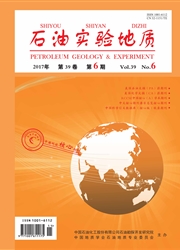

 中文摘要:
中文摘要:
电子探针与阴极荧光谱仪相结合是目前应用于地质研究中的新方法。碳酸盐矿物的阴极荧光强度与微量元素分布及含量有关:方解石及白云石的阴极荧光与元素分布有相关性,方解石荧光强度与Mn含量相关,在较低的束流条件下Mn的存在可产生较强的荧光,较高的束流条件下Fe的存在使阴极荧光强度降低;低束流条件下清晰地显示不同类型的白云石的存在,自形白云石具有较强的阴极荧光,且具环带构造;而高束流条件下白云石阴极荧光的内部结构趋于消失。阴极荧光的强度与电子探针的Mn、Fe元素含量的控制、并与电子探针的元素分布相对应。电子探针与阴极荧光谱仪相结合是碳酸盐岩储层沉积环境、结构分析、胶结物序列、微量元素分析及孔隙演化分析的有效手段。
 英文摘要:
英文摘要:
Detailed research with CL and EPMA on carbonate minerals shows that CL intensity on carbonate mineral is related with trace element contents and EPMA beam current,the CL image is correspondent with EPMA element distributing mapping:Calcite CL intensity is related with Mn contents and in less beam current Mn rich areas will emit stronger CL but in larger beam current with cloudy CL image because the exists of Fe that will decrease the CL intensity.The dolomite has a distinctively inner CL image with sometimes showing dolomite rings in less beam current,but with larger beam current the inner CL difference of dolomites disappeared,the CL intensity of dolomites are apparently related with Mn,Fe trace element mapping of EPMA and CL can gives more detail of the carbonate minerals.The CL and EPMA technique can be useful in carbonate reservoir texture,cement sequence and pore evolution analysis.
 同期刊论文项目
同期刊论文项目
 同项目期刊论文
同项目期刊论文
 Formation mechanism of carbonate cemented zones adjacent to the top overpressured surface in the cen
Formation mechanism of carbonate cemented zones adjacent to the top overpressured surface in the cen 期刊信息
期刊信息
